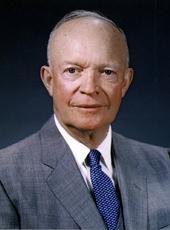
Memorandum of Disapproval of Bill Concerning a Claim of the Cuban-American Sugar Company
I am withholding my approval from S. 3304, which would confer jurisdiction upon the Court of Claims of the United States to consider and render judgment on the claim of Cuban-American Sugar Company against the United States.
The problem at the root of the lawsuit and the private relief bills involves the company's World War I excess profits taxes for the year 1917. The specific facts in this 34 year old controversy are set forth fully in the report of the Senate Judiciary Committee (S. Rept. 1963, 83d Cong., 2d sess.). Basically, the taxpayer, for the year 1917, computed its excess profits tax liability on the invested capital method. Some years thereafter, it felt that its tax liability was excessive and requested the Commissioner to compute the tax under the relief provisions of the law. When this was done, additional taxes were found to be due, and were paid. Several years later, in 1927, a claim for refund was filed on the ground that the tax computation by the relief method was erroneous. This claim was rejected on March 15, 1933, although later that year the taxpayer attempted to amend it, claiming that the invested capital method should be used. This method had been used in a settlement of the years 1918, 1919, and 1920, controversy with respect to which had been going on concurrently. The claim for refund filed in 1933 was rejected on the grounds it was not filed within the statutory period.
The over-all effect of the legislation would be to direct the Court of Claims to determine the 1917 liability of the taxpayer by applying the invested capital method used in settling the years 1918, 1919, and 1920 before the Board of Tax Appeals (even though section 3 of the enrolled enactment states that nothing in the Act is to be construed as an inference of liability on the part of the United States) since, as the Committee Report indicates, there is no question but that the taxpayer's taxes were overpaid.
Since the bill grants relief from the operation of the statute of limitation, special equitable circumstances should appear which require that this taxpayer be singled out for special relief. It is difficult to find such circumstances in this case. Basically, the Senate Report urges that the taxpayer was denied a proper hearing by the Commissioner with respect to this claim. Yet, as the Senate Committee Report itself indicates, both prior to 1921, and after 1927, the taxpayer and the Commissioner's representatives had numerous conferences with respect to the taxpayer's 1917 liability. It would have served no purpose to hold further conferences in 1933 on a refund claim which was filed after the statute had run and based on another method of computation.
It is also suggested that the Bureau of Internal Revenue and the taxpayer "agreed" to postpone any action on the 1927 claim for refund until the 1918, 1919, and 1920 cases were determined.
No valid evidence appears that there was such an "agreement". Indeed, the only information regarding any such discussion is, as the Court of Claims stated in a decision rendered in 1939 on this matter and involving this taxpayer, that a representative of the taxpayer had written a letter to the Bureau "purporting to confirm a conversation" with a representative of the Bureau that further conferences on the year 1917 were to be indefinitely postponed for the reason that nothing further could be done regarding the special assessment question until such question had been settled by the Bureau or the Board of Tax Appeals. This unilateral statement not only does not seem adequate evidence of such an agreement but illustrates the desirability of a statute of limitations which disposes of stale claims and the necessity for retaining or securing evidence with respect thereto..
Finally, the bill requires the Court of Claims to use a specific method of computing invested capital (assuming the taxpayer has overpaid his taxes), to be based upon an amount arrived at in settling the controversy before the Board of Tax Appeals for the years 1918 through 1920. The year 1917 was not involved in that settlement, nor, as the Court of Claims indicated in its 1939 decision, "does the action taken with respect to subsequent years constitute conclusive proof as to 1917". Even assuming the desirability of granting jurisdiction to the Court of Claims for this year, it does not seem desirable to preclude the Court from determining the correct tax liability for the year.
Since the proposed legislation would be discriminatory and would single out a particular taxpayer for relief from the statute of limitations without adequate reason therefor, and since it would preclude the Court of Claims from determining the true tax liability, I feel constrained to withhold my approval of S. 3304.
DWIGHT D. EISENHOWER
Note: This memorandum was released at Lowry Air Force Base, Denver, Colo.
Dwight D. Eisenhower, Memorandum of Disapproval of Bill Concerning a Claim of the Cuban-American Sugar Company Online by Gerhard Peters and John T. Woolley, The American Presidency Project https://www.presidency.ucsb.edu/node/232564
